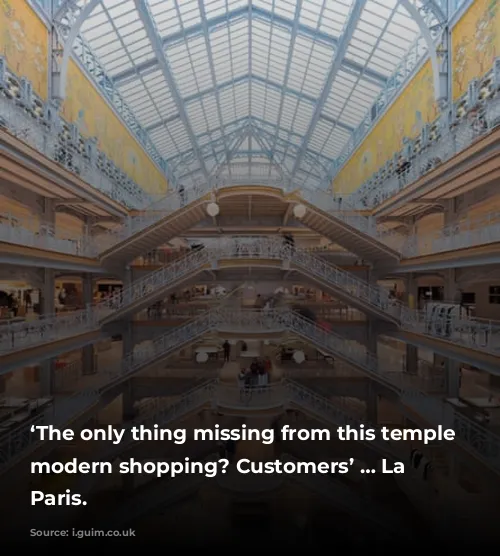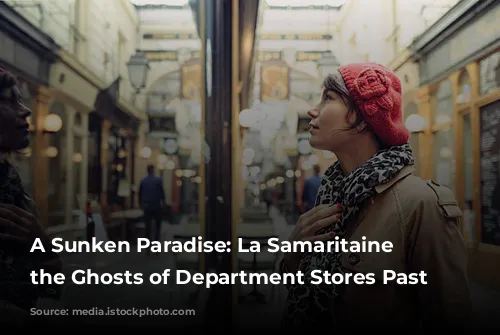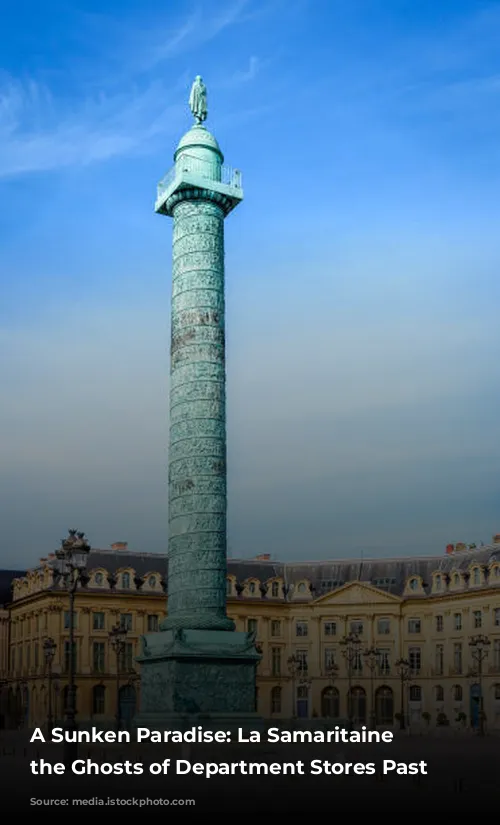The air is thick with the promise of luxury, but the reality is far more somber. On the top floor of Paris’ iconic La Samaritaine, a beach scene unfolds, with digital sunsets and rows of empty champagne-branded deckchairs. This seemingly whimsical setting contrasts starkly with the ghostly quiet that pervades the rest of the store.
Downstairs, the “beauty light bar” offers futuristic face masks, but even the promise of youthful radiance seems to fall flat. An immersive Olympic retail experience features stuffed mascots shaped like grinning French revolutionary hats, a bizarre spectacle that underscores the store’s struggle to find its footing.
The emptiness is palpable. Though La Samaritaine reopened just three years ago, it seems to be floundering in a sea of empty promises, unable to attract customers in the way it once did. The store’s ambitious renovation, completed after a 16-year, €750m makeover, has seemingly failed to revitalize the shopping experience.
A sense of melancholy hangs over La Samaritaine, a reminder of the fading grandeur of a bygone era. The once bustling department store now serves as a stark counterpoint to the opulence of the Musée des Arts Décoratifs, located just down the road. This museum, a celebration of the glamorous history of Parisian department stores, offers a poignant glimpse into a time when these grand spaces were the lifeblood of the city.

The Rise and Fall of the Department Store
The exhibition at the Musée des Arts Décoratifs offers a captivating journey through the evolution of the department store. These palatial temples of consumption emerged in the 1850s, driven by the economic boom of Napoleon III’s reign. Their grand interiors, with vaulted glass ceilings and cascading staircases, were designed to captivate the burgeoning bourgeoisie.
These cathedrals of commerce were more than just shopping destinations. They were elaborate stage sets where the newly wealthy could display their status and indulge in the pleasures of leisure. They offered a haven for women, providing a space where they could socialize and shop without their husbands.
The key to their success was their ability to create an immersive experience, fostering a sense of wonder and luxury. The department stores honed the art of product display, showcasing merchandise in ways that provoked desire and encouraged impulse purchases.

The Rise of Consumerism and the Legacy of the Department Store
The exhibition at the Musée des Arts Décoratifs reveals how the department store played a pivotal role in shaping modern consumerism. It was here that sophisticated sales techniques, such as seasonal sales and targeted advertising campaigns, were first developed. This era saw the birth of fast fashion, with clothing and accessories being mass-produced and marketed to a growing consumer base.
The show also highlights the emergence of mail-order catalogues, a precursor to the modern online shopping experience. These catalogues, filled with illustrations of everything from umbrellas to bicycles, showcased the vast array of goods available to the modern consumer.
While the exhibition celebrates the grandeur of the department store era, it also raises questions about its legacy. The unbridled consumerism fostered by these grand spaces has had a profound impact on our world, leading to the rise of exploitative supply chains, excessive waste, and environmental degradation.

A New Era for Urban Spaces?
As the days of the traditional department store appear to be waning, we are left to ponder its future. Could these grand spaces be repurposed to serve new purposes, offering a different kind of experience? Imagine these multistorey palaces of spending transformed into vibrant community hubs, filled with libraries, art studios, and co-working spaces.
Perhaps the legacy of the department store lies not in the products it sold, but in the possibility it offered for connection, creativity, and shared experience. It is up to us to decide whether these spaces will become mere echoes of a bygone era or transform into a new kind of urban oasis.











